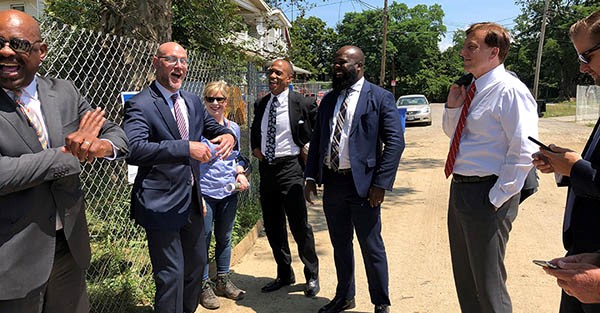Spotlight: EDA Invests to Help Spur Economic Development in Qualified Opportunity Zones and Related Areas Across the Country
October 2019 Newsletter
Opportunity Zones were created under the 2017 Tax Cuts and Jobs Act and signed into law by President Trump on December 22, 2017, to stimulate economic development and job creation by incentivizing long-term investments in low-income neighborhoods.
More than 35 million Americans live in nearly 9,000 specially-designated Qualified Opportunity Zones (PDF), which were identified by Governors and certified by the Department of the Treasury, throughout the U.S. and its territories.
Working together in a bipartisan manner, President Trump and Congress developed this special tax incentive, which allows investors to defer tax on any prior gains invested in a Qualified Opportunity Fund (QOF) until the earlier of the date on which the investment in a QOF is sold or exchanged or until December 31, 2026.
Additionally, the longer an investment is held in a QOF, the lower the capital gains tax liability.
Through step-up of basis - the readjustment of the value of an appreciated asset - investors receive a 10 percent exclusion of the deferred gain after five years, which grows to 15 percent after seven years. Furthermore, if the investment is held for at least 10 years, any appreciation of the QOF investment is tax-free.
EDA is encouraging its economic development partners to think of Opportunity Zone investment as a new arrow in their quiver to not only enhance ROI for business interests, but also to encourage the public/private partnerships needed to drive private investment to distressed areas.
Since FY2018, EDA invested over $309.5 million in 221 projects across the U.S. to support designated Opportunity Zones.

To bolster these numbers, in FY18, EDA issued a Notice of Funding Opportunity that made Opportunity Zones eligible for funding from EDA, through its special needs category, even if the area would not meet EDA’s economic distress criteria.
In addition, EDA added Opportunity Zones as one of its five Investment Priorities to help significantly increase the number of catalytic Opportunity Zone-related projects we can fund.
To educate and highlight best practices in communities across the nation, Assistant Secretary Fleming has been traveling the country to discuss Opportunity Zones during an extensive, and ongoing, White House Opportunity and Revitalization Council (WHORC) listening tour.
At stops in Lubbock, Texas; Lafayette, Louisiana; Canton, Ohio; and elsewhere, Assistant Secretary Fleming has heard about the incredible potential of the Opportunity Zone initiative to transform distressed communities. He has seen communities developing prospectuses that highlight their assets and use local knowledge to emphasize the most impactful investment opportunities.
Recently, Assistant Secretary Fleming penned an op-ed in Fortune magazine to further educate the American people, titled, “Opportunity Zones Aren’t a Gimmick—They’re a Legitimate Investment Option”.
We encourage state and local governments to offer their own Opportunity Zone tax incentive packages to stack on top of the federal Opportunity Zone tax incentives.
The sky is the limit when it comes to how the Opportunity Zones initiative can benefit investors and transform distressed communities. That is why the Trump Administration is committed to helping make the initiative a success.
For more information on EDA’s role, please visit our Opportunity Zones webpage.
